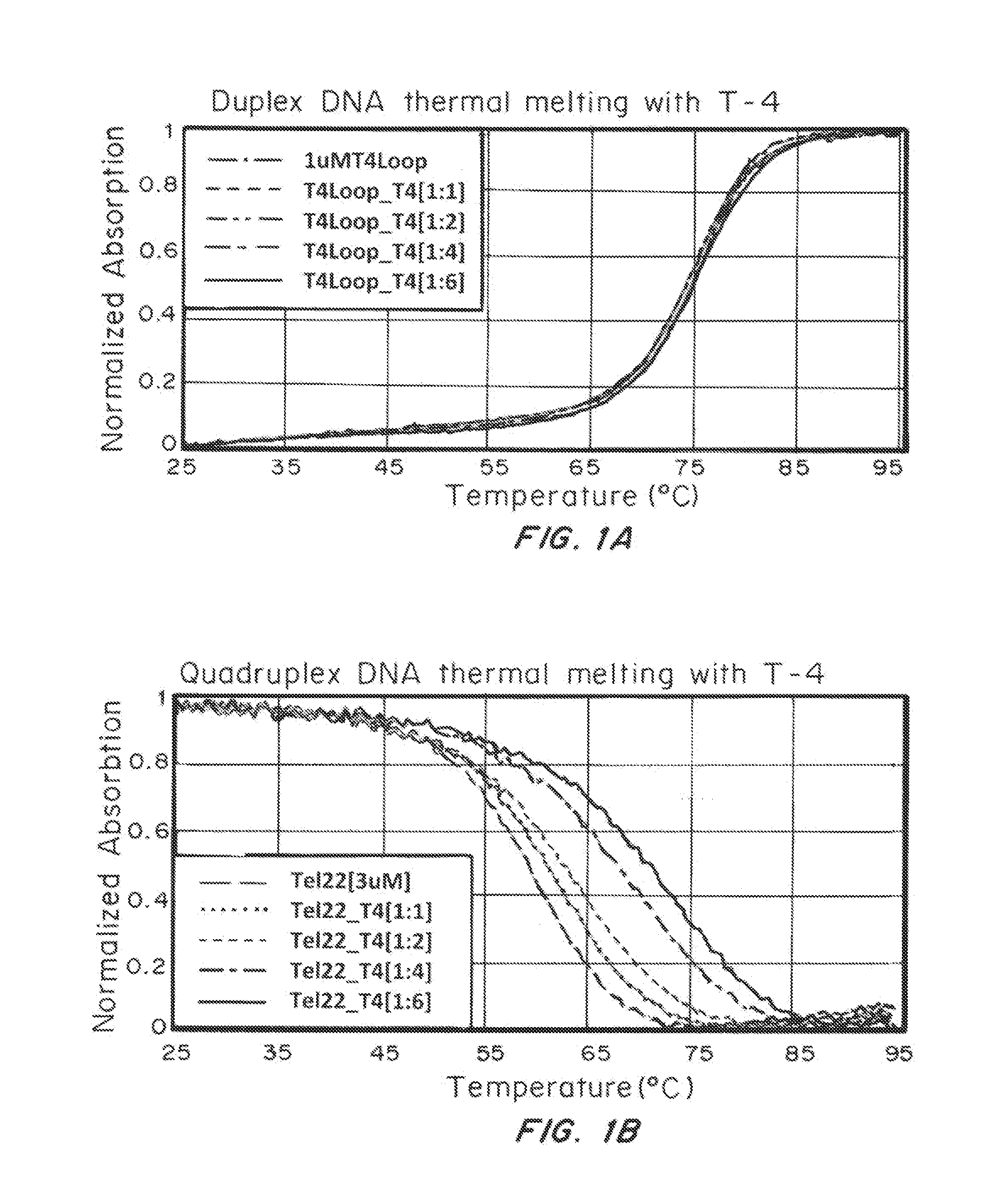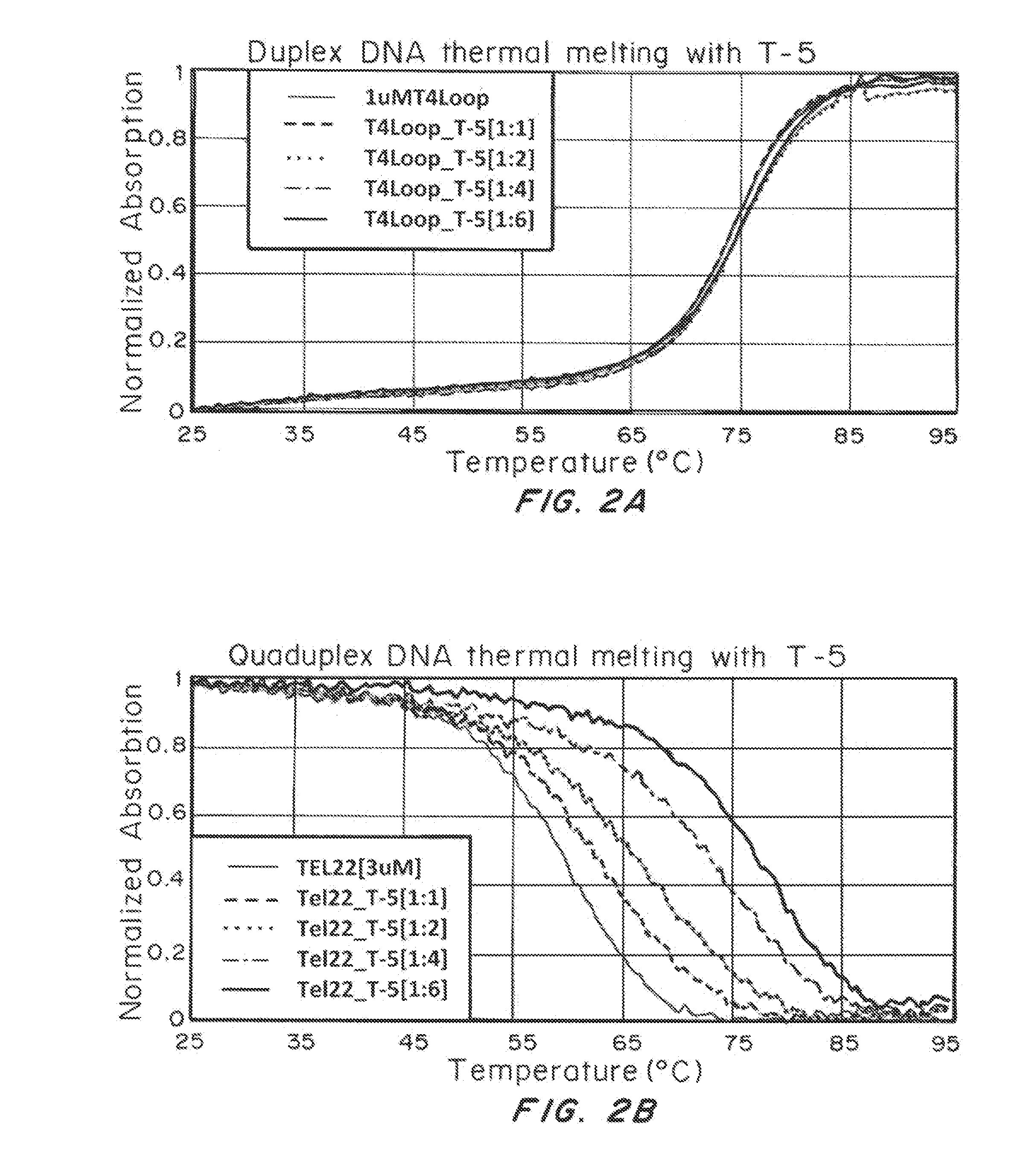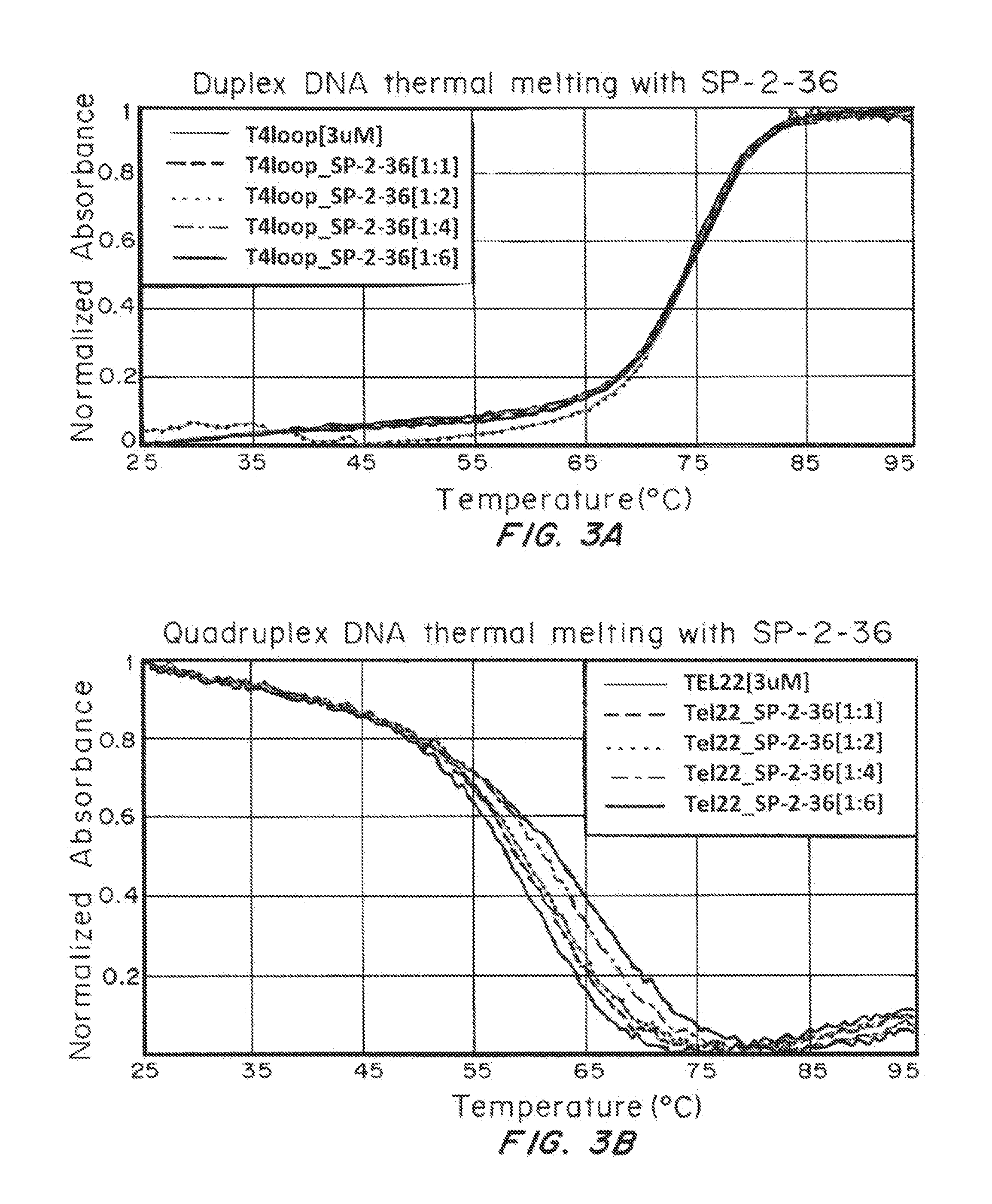Carbocyanines for G-Quadruplex DNA Stabilization and Telomerase Inhibition
a telomerase inhibitor and carbocyanine technology, applied in the field of cyanine dyes, to achieve the effect of reducing the tendency of cyanin
- Summary
- Abstract
- Description
- Claims
- Application Information
AI Technical Summary
Benefits of technology
Problems solved by technology
Method used
Image
Examples
example 1
Synthesis of Fischer Bases 7-12
[0312]A mixture of 4-substituted phenylhydrazine hydrochloride 1-6 (4.47 mmol) and 3-methyl-2-butanone (0.6 mL, 5.61 mmol) was dissolved in glacial acetic acid (15 mL), and then heated under reflux for 8 h under nitrogen. The solvent was evaporated in vacuo. The residue was dissolved in methylene chloride (CH2Cl2) (30 mL) and washed with 10% aqueous Na2CO3 (2×30 mL), dried over Na2SO4, and the solvent was evaporated to afford 7-12 as an oil. The product was used in the next reaction without further purification.
[0313]5-Bromo-2,3,3-trimethylindolenine (8): Yield 90%, 1H NMR (400 MHz, CDCl3): 6, ppm: 7.38 (m, 3H), 2.25 (s, 3H), 1.28 (s, 6H).
example 2
Synthesis of Salts 22 and 23
[0314]Toluene (50 mL), indolenine 12 (0.0623 mol), and 1,3-propanesultone (1,4-butane sultone) (0.0935 mol) were heated under reflux for 18 h. The reaction mixture was allowed to cool to room temperature. The resulting pink crystals were filtered and washed with acetone (3×10 mL). The filtered product was crystallized from a solution of methanol (MeOH) and diethyl ether (Et2O). The crystals were collected and dried in vacuo.
example 3
Synthesis of Salts 16-20
[0315]A mixture of 7-10, 13 (31.4 mmol) and 3-bromopropiltrimetilammonium bromide (9.0 g, 34.5 mmol) was refluxed in acetonitrile (100 mL) for 72 hrs under nitrogen atmosphere. The reaction was cooled to room temperature, stayed overnight and then obtained precipitate was collect by filtration, washed with acetone and diethyl ether.
[0316]Compound 18: Yield 10.7 g, 25.4 mmol, 81%. M.p. 225-227° C. 1HNMR (400 MHz, DMSO-d6), δ: 1.57 (s, 6H), 2.27 (s, 9H), 3.02 (s, 3H), 3.83 (t, J=8.0 Hz, 2H), 4.57 (t, J=8.0 Hz, 2H), 7.61 (m, 2H), 7.88 (t, J=5.6 Hz, 1H). 13CNMR (100 MHz, DMSO-d6): δ 15.2, 22.0, 25.5, 30.6, 52.3, 54.3, 63.9, 115.6, 123.5, 128.8, 129.3, 140.9, 141.7, 197.7.
PUM
| Property | Measurement | Unit |
|---|---|---|
| melting point | aaaaa | aaaaa |
| pH | aaaaa | aaaaa |
| pH | aaaaa | aaaaa |
Abstract
Description
Claims
Application Information
 Login to View More
Login to View More - R&D
- Intellectual Property
- Life Sciences
- Materials
- Tech Scout
- Unparalleled Data Quality
- Higher Quality Content
- 60% Fewer Hallucinations
Browse by: Latest US Patents, China's latest patents, Technical Efficacy Thesaurus, Application Domain, Technology Topic, Popular Technical Reports.
© 2025 PatSnap. All rights reserved.Legal|Privacy policy|Modern Slavery Act Transparency Statement|Sitemap|About US| Contact US: help@patsnap.com



